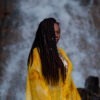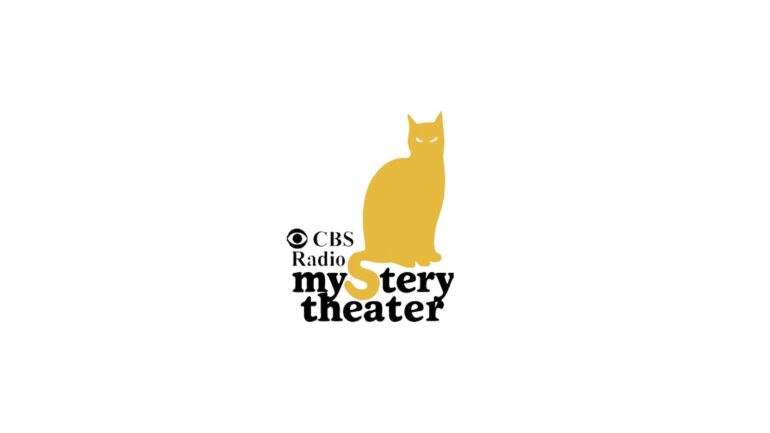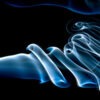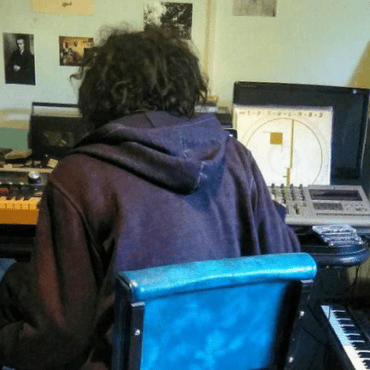Listeners:
Top listeners:
-
 play_arrow
play_arrowRADIO RUEDA InterPermaCultural, Bilingual, Experimental, Artivist & Human

 Griselda Sánchez (Lluvia Obsidiana)
Griselda Sánchez (Lluvia Obsidiana)
WEB: Facebook
OBRA: LÍRIDAS: Fonografía de un Momento Fugaz.
PLUS: No.
FORMATO: Digital.
SELLO: No.
RELEASE: Abril 2020.
PAÍS: México.
Hace unos años, confluí con Griselda Sánchez siendo partes del Festival Tsonami de Arte Sonoro, en diciembre de 2017. Recuerdo que su pieza me llamó mucho la atención. Un “mixtape”, aunque collage sería mas preciso, de sonidos extraídos de la RADIO, su pieza, en aquél momento se llamó PALABRANDAR.
Griselda es conocida también por los pseudónimos de Lluvia Obsidiana o Lluvia Mixteca, también es periodista, productora radiofónica y paisajista sonora.
Hace unos días, compartió en sus redes un trabajo fonográfico tan sencillo como profundo, lleno de matices y de muchas complicidades, valorable por su simpleza que esconde matices tan complejos como una lluvia de estrellas en un firmamento apenas opacado por el neón de las lejanas ciudades, en pandemia.
La experimentación con sonidos es una tarea muy compleja, en diversas oportunidades pude escuchar la relativización de este acto, forma de investigar o de trabajar con la materia sonora, limitándola a conceptos reducidos, adjudicándoselas a “élites” de artistas o a quienes consiguen un software o un hardware de moda y se disponen a jugar con el nuevo “objeto”. Muy por el contrario, la tarea de experimentar con el sonido es parte de un trabajo complejo, arduo que va más allá de la música, cualquiera sea su etiqueta y que trasciende tantas fronteras como ideas puedas concatenar en una libreta de notas.
La interdisciplina es en esta tarea un factor vital para ello, los experimentadores sonoros de las (ahora intachables e intocables) vanguardias artísticas, tenían muy en claro, que abordar el sonido, solo podía realizarse haciendo una llamada a otra fuente artística, mirando el presente, observando y, principalmente, escuchando. De esa forma, el interés por recrear el entorno, a su propia manera, solo podía lograrse con esfuerzo y horas de trabajo, empatizando con la coyuntura, siendo parte del contexto, asumiendo un rol.
Desaparecen por la entrada de proyectos extractivos como la minería o la deforestación de los bosques.
La comunidad donde estoy realizando esta investigación, se encuentra amenazada por la concesión minera de sus tierras, también por un avance en la explotación del bosque. Es así que pasé varias temporadas haciendo trabajo de campo y registrando el entorno sonoro de los diferentes espacios que dan sentido a su vida de forma comunitaria. Y con el tema de la pandemia que ahora azota al mundo, pues, me quedé mucho más tiempo haciendo trabajo en la comunidad. Las comunidades indígenas como medida de protección han cerrado el paso, haciendo filtros sanitarios para poder protegerse y entonces, también estamos en un periodo de siembra en que las familias se van a los diferentes ranchos a sembrar y sobre todo en este momento de certeza en el que no solamente está en juego la salud, también la alimentación de las personas, que hay un golpe económico para la gente, es que las familias han decidido seguir preservando con mayor fuerza sus formas de siembra y cultivo, estamos en la montaña, en temporada de siembra, en temporada donde no hay luz, señal de teléfono, rodeados de árboles de pino, de encino. Y a la vez de estar ayudando y aprendiendo la siembra de la Milpa,también estoy registrando los sonidos del bosque, sobre todo en las mañanas, los amaneceres, esto es el contexto en el que me encuentro grabando.
 Griselda Sánchez (Lluvia Obsidiana)
Griselda Sánchez (Lluvia Obsidiana)
La Fonografía Persigue Compartir la Experiencia de Quien Graba
A medida que entramos en LÍRIDAS, vamos asumiendo ser parte de ese recorrido que estamos escuchando. Ser unos caminantes más en ese paseo de montaña cuesta arriba. Sabemos que día es, escuchamos el crepitar de las hojas, el viento que acaricia la copa de los pinos y encinos, nos asombramos cuando levantamos la vista hacia el cielo y vemos la primera estrella fugaz y la consecuente lluvia de meteoritos. También dejamos descansar nuestro oído en el silencio para escuchar las respiraciones, las brisas, los mínimos movimientos de pies y el rozar de los brazos en la ropa. Somos parte de un entorno y como parte del contexto, somos parte de esta obra.
 Griselda Sánchez (Lluvia Obsidiana)
Griselda Sánchez (Lluvia Obsidiana)
Si gustan, pueden escuchar el podcast con la reseña en el RUIDO #07.
CONTACTO: franco.falistoco [@] elruidoeselmensaje.com
WEB: Facebook.
WORK: LÍRIDAS: Fonografía de un Momento Fugaz.
PLUS: No.
FORMAT: Digital.
LABEL: No.
RELEASE: April/2020.
COUNTRY: Mexico.
A few years ago, I joined Griselda Sánchez as part of the Tsonami Sound Art Festival in December 2017. I remember that her piece caught my attention. A “mixtape”, although collage would be more precise, of sounds extracted from the RADIO, her piece, at that time was called PALABRANDAR.
Griselda is also known by the pseudonyms of Lluvia Obsidiana or Lluvia Mixteca, she is also a journalist, radio producer and soundscaper.
A few days ago, shared in her networks a phonographic work as simple as it is profound, full of nuances and many complicities, valued for its simplicity that hides nuances as complex as a rain of stars in a firmament barely overshadowed by the neon of distant cities, in a pandemic.
Experimentation with sound is a very complex task, on several occasions I was able to hear the relativization of this act, a way of investigating or working with sound material, limiting it to reduced concepts, assigning it to “elites” of artists or to those who get a software or hardware in fashion and are ready to play with the new “object”. On the contrary, the task of experimenting with sound is part of a complex, arduous work that goes beyond music, whatever its tag, and that transcends as many frontiers as ideas you can concatenate in a notebook.
Interdiscipline is a vital factor in this task. The sound experimenters of the (now impeccable and untouchable) artistic avant-garde were very clear that approaching sound could only be done by calling on another artistic source, looking at the present, observing and, above all, listening. Thus, the interest in recreating the environment, in its own way, could only be achieved with effort and hours of work, empathizing with the situation, being part of the context, assuming a role.
They disappear due to the entry of extractive projects such as mining or deforestation of the forests.
The community where I am carrying out this research is threatened by the mining concession of its lands, also by an advance in the exploitation of the forest. So I spent several seasons doing fieldwork and recording the sound environment of the different spaces that give meaning to their life in a community way. And with the issue of the pandemic that is now sweeping the world, well, I spent much more time doing work in the community. The native communities as a protection measure have closed the way, making sanitary filters to be able to protect themselves and then, we are also in a period of sowing in which the families go to the different ranches to sow and above all in this moment of certainty in which not only health is at stake, also the feeding of the people, that there is an economic blow for the people, is that the families have decided to continue preserving with greater force their forms of sowing and cultivation, we are in the mountain, in season of sowing, in season where there is no light, signal of telephone, surrounded by trees of pine, of oak. And at the same time that I am helping and learning the cultivation of the Milpa, I am also recording the sounds of the forest, especially in the mornings, the dawns, this is the context in which I find myself recording.
The Phonography Pursues Sharing the Recorder’s Experience
As we enter LÍRIDAS, we are assuming to be part of that journey we are listening to. Being a few more walkers on that uphill mountain walk. We know what day it is, we hear the crackling of the leaves, the wind caressing the tops of the pines and oaks, we are amazed when we look up to the sky and see the first shooting star and the consequent meteor shower. We also let our ears rest in the silence to listen to the breathing, the breezes, the slightest movement of feet and the rubbing of arms on clothes. We are part of an environment and as part of the context, we are part of this work.
If you like, you can listen to the podcast with the review in NOISE #06.
CONTACT: franco.falistoco [@] elruidoeselmensaje.com
Written by • Escrito por: RADIO RUEDA
SIMILAR
Search • Buscar
Fresh ink • Tinta fresca
- It Rises All Nectar lanza “El trono vacante” junto al guitarrista catalán Javi Alcalá
- misi presenta “Slagbaai”, LP debut basado en una isla imaginaria
- Irma Ferreira viaja entre la tradición y lo contemporáneo en “Oríkì ti Oyá”, su nuevo single
- “Está bien no estar bien”, el himno con el que debuta eldelacuadra
- Diog Caltad invoca ternura y calma en “Silencio”, su nuevo EP
They said • Dijeron
Featured post • Publicación destacada
Latest posts • Posteos recientes

It Rises All Nectar lanza “El trono vacante” junto al guitarrista catalán Javi Alcalá

misi presenta “Slagbaai”, LP debut basado en una isla imaginaria

Irma Ferreira viaja entre la tradición y lo contemporáneo en “Oríkì ti Oyá”, su nuevo single

“Está bien no estar bien”, el himno con el que debuta eldelacuadra

Diog Caltad invoca ternura y calma en “Silencio”, su nuevo EP
Orbiting • Orbitando

🇬🇧 CBS Radio Mistery Theater
From the golden era of broadcasting
Radio shows from the golden era of broadcasting.
closeComing up next • Ya llega

📻 Rotate
Music@
23:00 - 23:30
🇦🇷 🇺🇾 Cazadores de Tornados
En la Máquina del Viento
23:30 - 00:00
🇦🇷 🇺🇾 Cazadores de Tornados
En la Máquina del Viento
00:00 - 00:30
📻 Rotate
Music@
00:30 - 02:00
🛰️ Amordiscos
Alimentando el gusto por la nueva música
02:00 - 03:00DONATE
Independent and associative. We are a free radio sustained by the mutual support of its producers and listeners. You can become our patron or collaborate through paypal with a donation or subscription. The opinions expressed in each program are the sole responsibility of those who broadcast them and do not necessarily represent the thoughts of our radio. • Independientes y asociativos. Somos una radio libre sostenida por el apoyo mutuo de sus realizadores y oyentes. Puedes volverte nuestro patron o colaborar a través de paypal con una donación o suscripción. Las opiniones expresadas en cada programa son responsabilidad exclusiva de quienes las transmiten y no representan necesariamente los pensamientos de nuestra radio.






COMMENTS / COMENTARIOS (0)